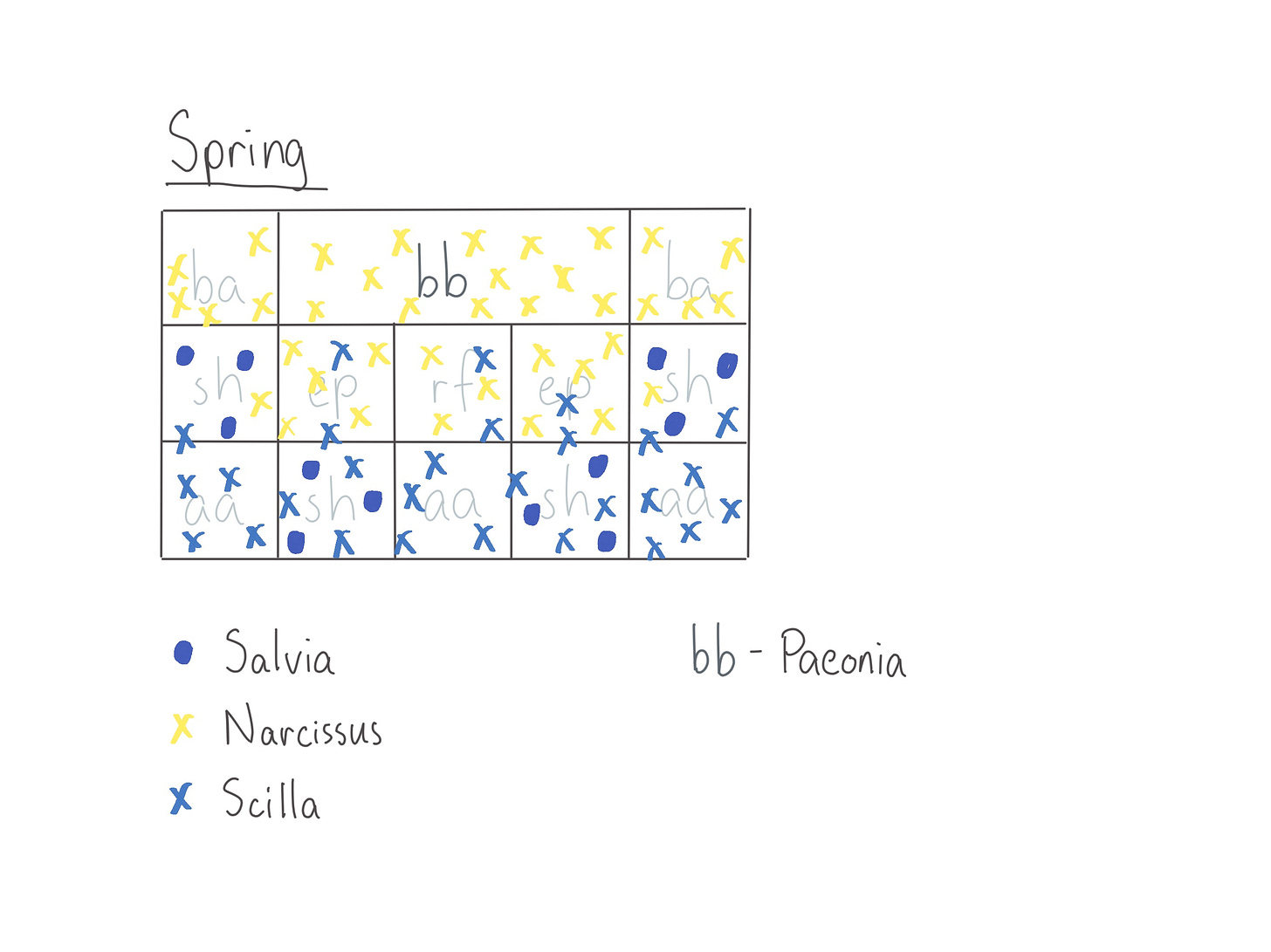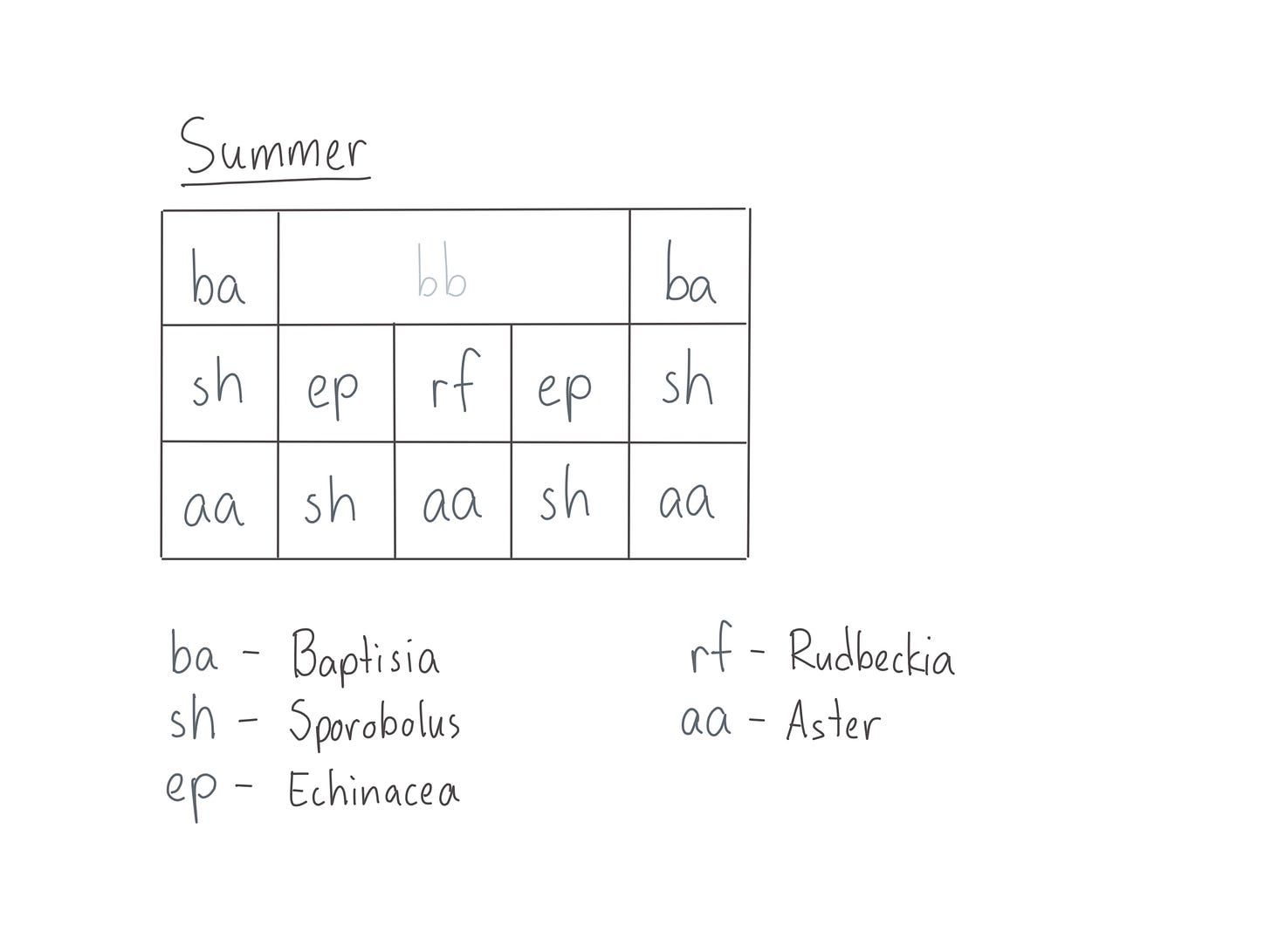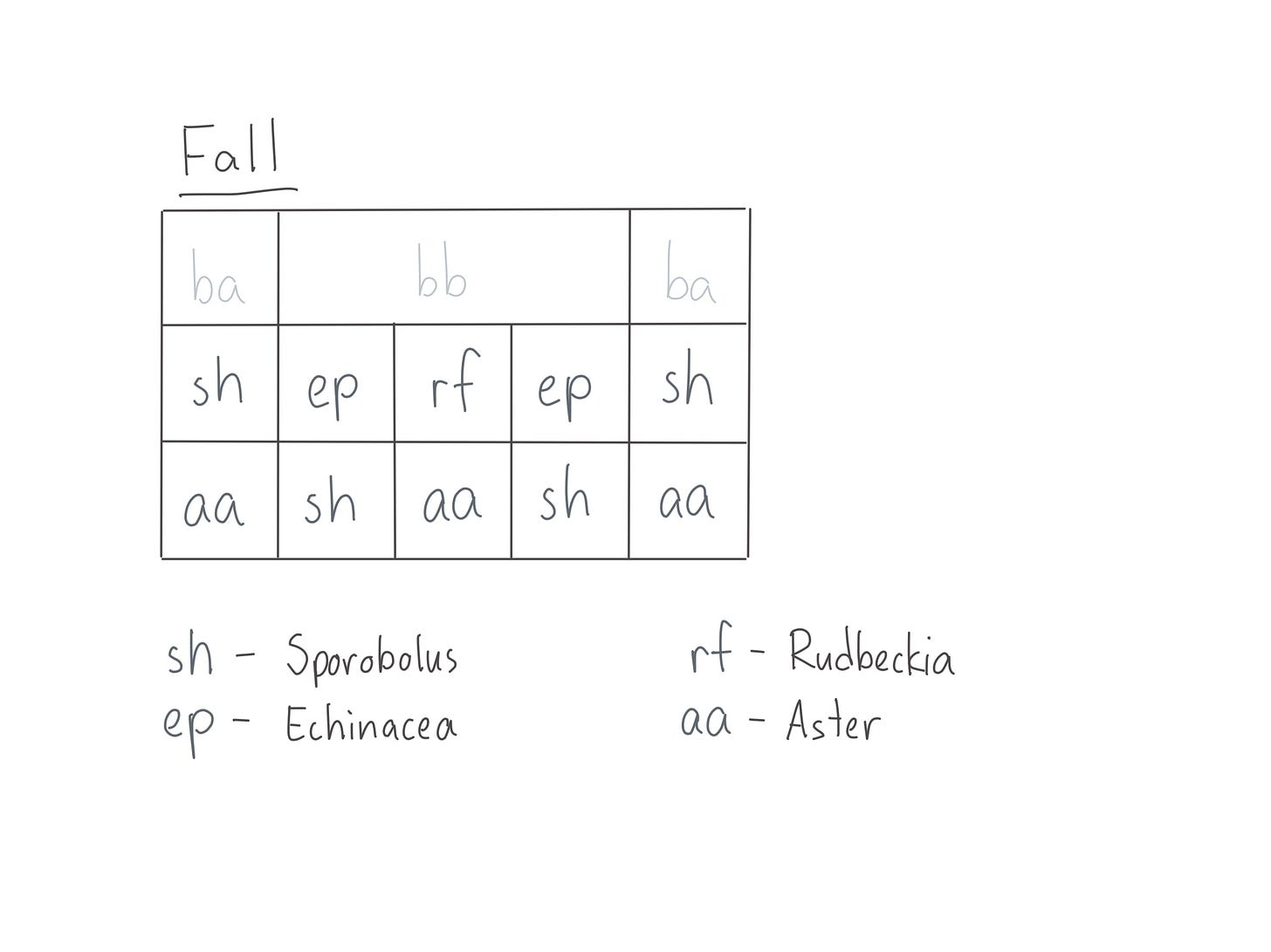Maackia 002: I had an idea!
I’m Nathan Langley and this is Maackia, a monthly newsletter where we talk about food, err..., I mean plants! Yes, plants.

How do you approach selecting plants for your garden? I often suggest clients visit a greenhouse or garden centre to see what jumps out at them. But I am starting to think there might be a better way. It’s not a novel or exciting idea by any means, but I think it might take some of the uncertainty out of the process. At the very least, it will help engage and focus the mind on the problem at hand. A little clarity these days couldn’t hurt!
I haven’t really done any design work on the landscape surrounding my house since taking possession in the fall of 2018. The main reason is that I wanted to sit with the space and see what presented itself as the seasons passed by. Suffice to say, my sitting went a little longer than I had anticipated. Despite my procrastination, some things have become abundantly clear. For example, most of the gardens are well past their peak and have been left alone for many, many years. One small garden bed next to the main entrance was quickly redone with an uninspired planting of three Thuja occidentalis and three low growing yellow tinged Chamaecyparis over black bark mulch and hort cloth. One of the Thuja was even planted in front of the dryer’s exhaust - it didn’t last long.
One small change I did make was after discovering bulbs sprouting up at weird locations in the front lawn. The leading theory was that someone had turfed over the main veggie garden plot that was tended to by owners who had been living on the property for some time (neighbours eventually confirmed this theory). I know that not everyone is interested in growing their own food, but the idea of turfing over an area that had been worked for decades seems wrong to me. Particularly when you account for how difficult it is to find a home in Sudbury with good soil. Out went the turf and back came the veggie garden (for now, anyway).
But I digress. The area that has been occupying the most space in my mind the past year or so is the entrance way off the main road up to the house. It just feels wrong; the energy is off. There are established jack pine and birch trees on one side that crowd the driveway with their branches, and a field bed/turf area on the other side. The field bed is also bordered by one of the garden beds that has been let go. As you can imagine, I haven’t been sure what to do with the space let alone start picking out plants.
Eventually my mind recalled a lecture from school that revolved around drawing attention. The idea was that an entrance garden should jump out at you and draw your eye towards the front door of a house. Sort of like subconscious trail markers for a place you have never been to before, which coincidently is why flowers look the way that they do in the first place (pollination syndromes are fascinating). This lesson made sense at the time but it fell apart for me when I started to think about the larger context of the space and the neighbouring areas. This is because in most residential yards these guiding gardens lose their power when everyone else has a similar garden with similar plants. It might have worked when suburbs were new and exciting, but now, for me at least, I want to know the house number first before deciding to pull up into a driveway. I don’t really need those floral cues. This isn’t to say that plants are no longer needed around a home. On the contrary - it just means that some different thinking is required. Maybe with a return to fundamentals to get us in a more creative, open-minded mode.
Here is my idea: recipes. I know, I know. I tried to warn you.
In this newsletter I am going to have a section at the end that contains one “recipe” with different plant combinations. It won’t be a finished design, but instead would be the foundation for a garden found in a zone 3 or 4 climate. The recipe will outline the plants used and will provide some detailed info about each plant. The goal is to keep things simple and to iterate each month in an effort to foster a more creative, and open minded space for the larger problems at hand.
What do you think? I’m excited!
the recipe
Cool Summer Breeze
I wanted to start with an example of what I was talking about at the end of the previous newsletter. The idea is to begin with a matrix planting (a very small one, anyways) and intersperse primary and scatter plants into that matrix. For this recipe, I am envisioning a foundation bed next to a home’s main entrance that is 5m x 3m in size. The hypothetical space is in full sun and has a zone 3 hardiness.
Ingredients:
Matrix plant
Sporobolus heterolepis (Prairie Dropseed)
- warm season grass; zone 3
Primary plants
Aster novae-angliae ‘Purple Dome’ (Purple Dome New England Aster)
- purple flowers from summer to fall; zone 2
Baptisia australis (Blue False Indigo)
- blue flowers in summer; zone 2
Echinacea purpurea ‘Magnus’ (Magnus Coneflower)
- pink flowers from summer to fall; zone 3
Paeonia ‘Bowl of Beauty’ (Bowl of Beauty Peony)
- pink flowers in late spring; zone 3
Rudbeckia fulgida ‘Goldsturm’ (Black-eyed Susan)
- yellow flowers from summer to fall; zone 3
Scatter plants
Salvia nemorosa ‘Blue Hill’ (‘Blauhuegel’) (Blue Hill Meadow Sage)
- purple flowers from late spring to early summer; zone 3
Narcissus poeticus var. recurvus (Daffodil)
- white flowers with a yellow cup in spring; zone 3
Scilla siberica (Siberian Squall)
- blue flowers in spring; zone 2
Seasons:
Working with scatter plants affords some creativity in the selection process as you focus more on how the plants grow through spring, summer, and fall instead of when they flower and their specific colours.

The main draw in early spring are the bulbs and the perennials that will ultimately flower sometime in spring or early summer. Personally, I really enjoy the delicate textures of perennials as they first sprout up (for example: Paeonia). The reliance on bulbs is also deliberate as spring in a northern climate often comes quickly and ends abruptly. This doesn’t give a lot of breathing room for spring perennials to be enjoyed. To me, spring is more like jumping into a cold lake after sitting in a hot sauna - you get used to the drab and dirty feeling of late winter and then, suddenly, the intense colour from different bulbs shocks your system out of its slumber. It’s quick and full of energy.
As spring progresses, the early flowering perennials carry on where the bulbs left off (in this case, Salvia and Paeonia). As an aside, try to leave the bulbs alone until their foliage starts to yellow (when they go dormant). You can clean up the spent flowers, but don’t touch the leaves as they are gathering the energy the bulbs need to flower next year.

Most of the perennials should be well on their way by this point, but one in particular will be a little behind: Sporobolus heterolepis. This is because it is a warm season grass, which means it only starts growing when the temperatures are warm enough. This affords us another opportunity to use something as a scatter plant (Salvia nemorosa). Its purpose is to add some weight and interest next to where Sporobolus heterolepis will be growing. By the time the Salvia is done flowering in early summer, Sporobolus should be growing well for its main showing in late summer and early fall.

This is honestly my favourite time of year as it carries a relaxed hue while still bringing some excitement and positive energy. But the key is you have to stop yourself to see this subtlety instead of lamenting about the loss of warmer temperatures. Sporobolus loves the light at this time of year as the sun starts to lower in the sky. Aster, Echinacea, and Rudbeckia add a splash of colour, while seed pods become more important visually as each perennial becomes dormant. Don’t rush out to clean up your garden before winter! Leaving it until early spring will provide interest in the early winter months.
Overall, this small number of plants provides wonderful interest and impact in a small space and carries that energy through most of the year.